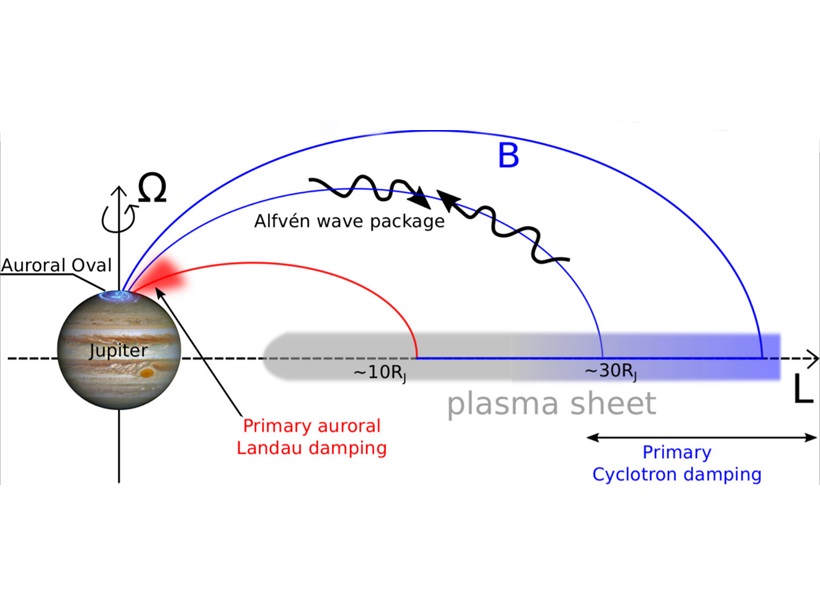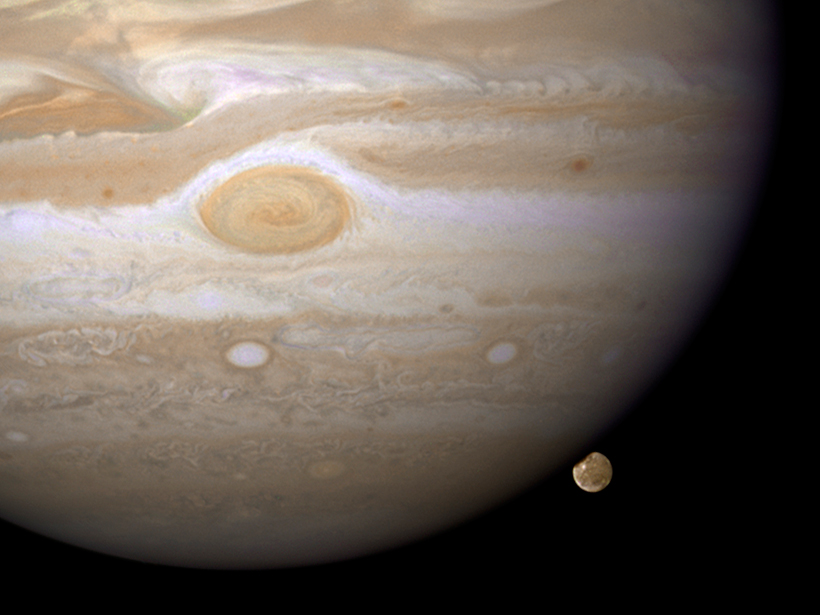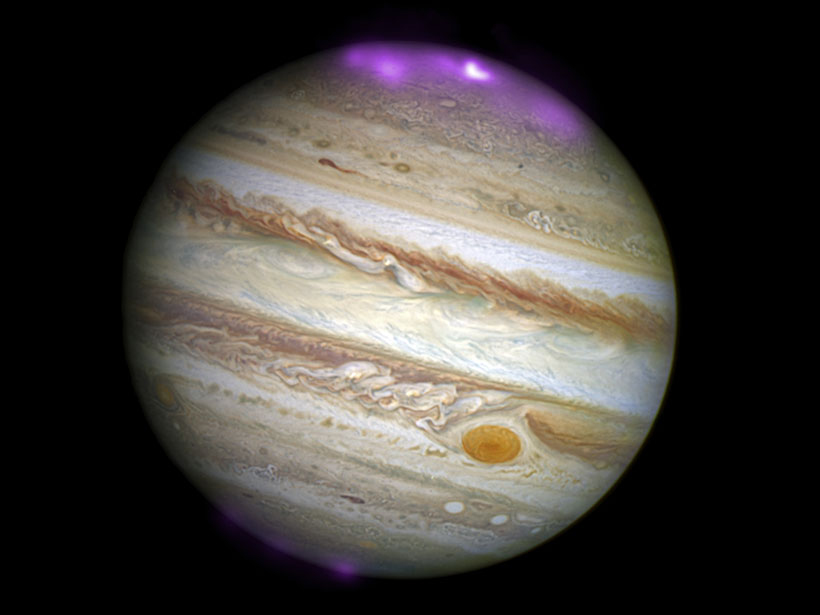The first movie of Jupiter’s infrared aurora gives scientists a new look at the Jovian magnetic field.
Jupiter
Jupiter’s Stressed Out Magnetosphere Causes Aurora and Heating
Force imbalance between Jupiter’s ionosphere and magnetosphere leads to wave generation to release this stress, but the waves also accelerate particles, causing aurora and heating.
Ten New Moons Discovered Around Jupiter
The newly plotted moons of Jupiter include one “oddball” that orbits in the wrong direction and may be the remnant of a head-on collision.
The Oxygen Neutral Cloud Surrounding Jupiter’s Volcanic Moon
Japan’s Hisaki satellite takes measurements of faint oxygen emissions from Io.
New Juno Data Reveal Four Key Secrets of Jupiter
Deep clouds, polar storms, lopsided gravity, and a uniformly rotating interior demonstrate that the gas giant plays by different rules than Earth.
Scientists Discover Stromboli-Like Eruption on Volcanic Moon
Jupiter’s moon Io is known for its lava fountains and roiling lava lakes, but scientists had never seen such an intense eruption in their data until now.
Jovey McJupiterface and Other Flights of Whimsy via JunoCam
Jupiter has van Gogh skies, kaleidoscope geometry, and fearsome dragons, if you can just look at the planet with an open mind.
Can Large Electric Fields Power Jupiter’s X-ray Auroras?
Electric fields with megavolt potentials in Jupiter’s polar region accelerate particles to 100 times more energy than Earth’s typical auroral particles, a new study finds.
Juno Gets Spectacular View of Jupiter’s Aurora
The NASA spacecraft has taken images of Jupiter’s powerful aurora dancing around its poles, revealing never-before-seen details in their structure.
New Findings from Old Data
Recalibrated and reanalyzed data from the Voyager flybys of Jupiter 40 years ago, presented in a series of papers in JGR: Space Physics, show the value of archival data.










